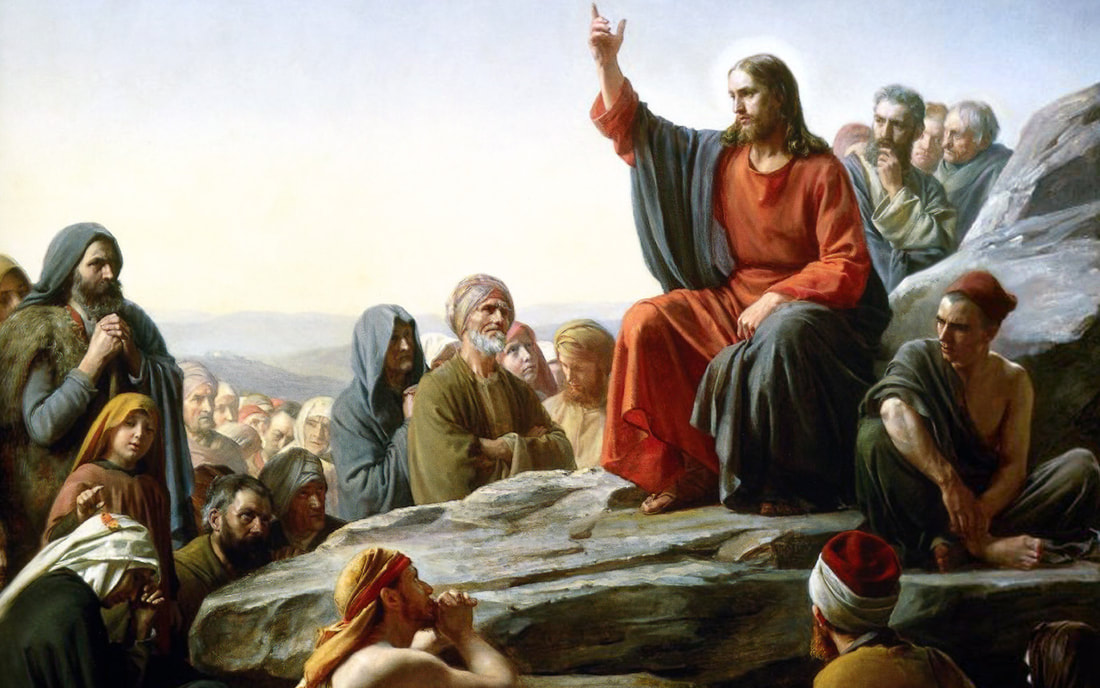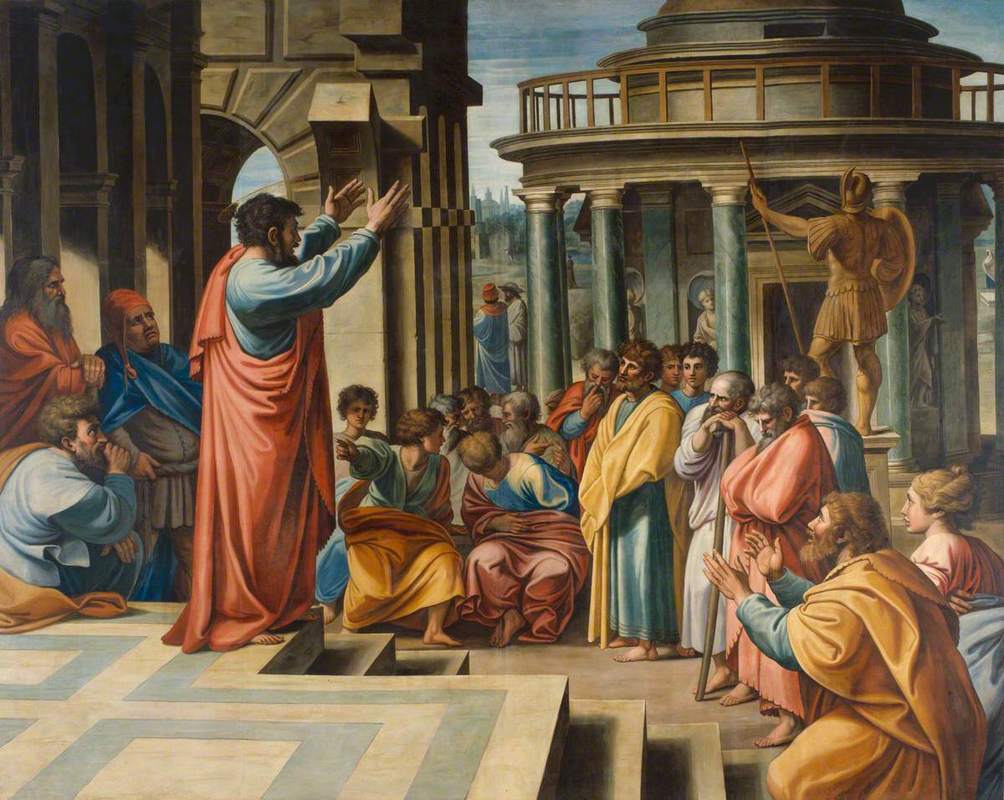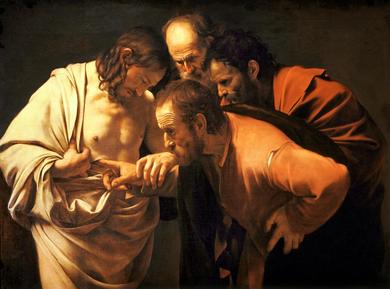|
5/1/2019 0 Comments Article V: The ResurrectionHow to Choose the Best Explanation of the FactsIn the previous posts, we looked at the three historical facts about Jesus that virtually all historical scholars agree on the empty tomb, the post-mortem appearances, and the origin of Christianity. The facts are neutral and do not explain themselves, so we need to know which theory best explains the facts. There are several theories proposed to try to explain the facts, and we will look at those in the next few articles.
In this article, we will first explore how historians generally decide between alternative theories. In other words, how do we determine which theory is best? Generally, historians lean on five criteria to assess the different theories and determine the best one. These will give us the ability to show skeptics that we have taken the facts applied these criteria to the possible theories to determine what makes the most sense of the evidence. The first criterion is the explanatory scope-the best theory should explain most or all of the facts. For example, if Explanation A explains two of the facts, and Explanation B explains all three of the facts, then by this criterion, Explanation B would be the better option. The second criterion is explanatory power-the best explanation should forcefully explain the facts, and not in a weak or cursory way. A good explanation, in other words, should make you think, "Yes, that's it!" and not, "Well, I guess I can maybe see how that might explain the facts." That is the difference between explanatory power and weakness. The third criterion is plausibility-the best explanation should be plausible, given the existing background information. It should make sense and not seem far-fetched and unlikely. For instance, I am standing in the backyard hitting golf balls and Msgr. Deutsch notices that there is a golf-ball sized hole in his bedroom window. It would be plausible for him to believe that I had hit an errant shot through his window. What is not plausible is that someone in Belvidere hit a ball from their backyard through his window. Both explain the golf-ball sized hole in the window, but the Belvidere theory is not at all plausible. But if he asks it probably came from Belvidere. The fourth criterion is how contrived the explanation is. The best explanation should not require us to adopt many or any new beliefs for which we have no evidence. Suppose we were trying to explain how the pyramids were built. There are numerous theories some suggest they were constructed using an innovative system of ramps, levers, and pulleys. Others suggest aliens made them. The alien explanation is an example of a contrived explanation. It requires us to accept new unfounded beliefs for which we have no evidence (aliens), and is, therefore, a contrived explanation and less likely correct. The fifth and final criterion is coherence with accepted beliefs. The best explanation will conflict with fewer accepted beliefs than other explanations. We have many accepted beliefs from the law of physics to the facts of history. The best explanation usually aligns with these. If, for instance, a theory forces us to overturn the law of gravity or that George Washington was the first President of the United States, then it is a strike against that theory. The explanation that does best on each of these criteria is usually the one that explains the full scope of facts, has greater explanatory power, is most plausible, is not contrived, and is in line with accepted beliefs. An important caveat is that sometimes the best explanations do not fair well on every criterion. For example, some revolutionary scientific theories-Einstein's general theory of relativity. When he proposed it the theory did not meet the last criterion of coherence of accepted beliefs. However, it did so well on the other four criteria that it was impossible to dismiss. In the next article, we will take the three historical facts of the empty tomb, the post-mortem appearances, and the origin of Christianity and the five most common explanations given for those facts (conspiracy theory, apparent death theory, displaced body theory, hallucination theory, and the Resurrection theory) and using these criteria determine the best one. Resources: Bradon Vogt, www.claritasu.com, episodes on the Resurrection.
0 Comments
4/29/2019 1 Comment Article IV: The ResurrectionPaul at the Aeropagus in Athens, Thornhill, James, 1675/1676-1734 Historical Fact III - The Conversion of the GentilesThe third historical fact that demands an explanation is the sudden rise of Christianity in the mid-first century. Why did it come into existence? What caused this movement to begin? Some of the most skeptical scholars recognize that Christianity arose because the earliest disciples sincerely believed that God raised Jesus from the dead.
The third historical fact, then, is the sudden and surprising birth of Christianity and its subsequent spread to the ends of the earth. To explain this third fact, we need to see the Resurrection through the New Testament writings, as the fulfillment of Jewish scripture. Then he opened their minds to understand the scriptures, and said to them, "Thus it is written, that the Christ should suffer and on the third day rise from the dead" (Luke 24:45). Then the other disciple, who reached the tomb first, also went in, and he saw and believed; for as yet they did not know the scripture, that he must rise from the dead (John 20:8-9). For I delivered to you as of first importance what I also received, that Christ died for our sins in accordance with the scriptures, that he was buried, that he was raised on the third day in accordance with the scriptures (1 Corinthians 15:3-4). The writers of the New Testament in giving proof for Jesus' resurrection continually point to it as the fulfillment of scripture. What scripture is referred to here? There is not an explicit prophecy of the resurrection of the Messiah on the third day. To answer this question, we must go back to the teaching of Jesus himself. In the Gospels, there is one passage from Jewish scripture that Jesus cites as a direct prophecy of his resurrection on the third day: the sign of Jonah (Matthew 12:38-41; Luke 11:29-32). Then some of the scribes and Pharisees said to him, “Teacher, we wish to see a sign from you.” But he answered them, “An evil and adulterous generation seeks for a sign, but no sign shall be given to it except the sign of the prophet Jonah. For as Jonah was three days and three nights in the belly of the whale, so will the Son of man be three days and three nights in the heart of the earth. The men of Nineveh will arise at the judgment with this generation and condemn it; for they repented at the preaching of Jonah, and behold, something greater than Jonah is here (Mattew 12:38–41). We all know this passage well. I don't know about you but when I hear it read I immediately think of children's bibles and movies that show Jonah camping out in the belly of the whale for three days. The Book of Jonah tells a different story. Three points stand out in the story. First, Jonah cried from "the belly of Sheol" and "the Pit," both of these, are standard Old Testament terms for the realm of the dead. Therefore, Jonah died in the belly of the whale. Second, Jonah says that his "soul" fainted within him, which is another way of saying that he died. Therefore, when the fish vomits Jonah onto the land, it is vomiting up a corpse. Third, God's first words to Jonah are "arise" (Hebrew qum). Qum is the same Semitic term Jesus uses when he raises Jarius' daughter from the dead (Talitha cumi). Therefore, the story of Jonah is the story of his death and resurrection. The climax of the story of Jonah is not his resurrection, but the subsequent and even more miraculous repentance of the Gentile city of Ninevah. "And the people of Nineveh believed God; they proclaimed a fast, and put on sackcloth, from the greatest of them to the least of them" (Jonah 3:5). To understand how miraculous this was we need to put ourselves in the shoes (or sandals) of a first-century Jewish reader, who would have known that Ninevah was the capital city of the Assyrian Empire, one of Israel's fiercest pagan enemies (see 2 Kings 15-17; Tobit 13). Recognizing this fact, it becomes apparent that the miracle of Jonah is the repentance or even the conversion of the Gentiles. The Pharisees and scribes demand a "sign" from Jesus that is a miracle to prove that he is who he is claiming to be. In response, Jesus declares that the only "sign" he will give to this generation is the sign of Jonah. Jesus is referring to both the miraculous rescue of Jonah from death and the repentance of the Gentiles. The same is true of the sign of the Son of Man. The "sign of Jonah" is both the Resurrection of the Son of Man on the third day and the repentance of the Gentiles that will follow his resurrection. What is Jesus saying about his resurrection? Jesus is telling us that the reason to believe in him is twofold: his resurrection from the dead and the inexplicable conversion of the pagan nations - the Gentiles. The most powerful reason for believing in the Resurrection is that many Gentile nations, cities, even empires would convert, cast away their idols, and turn to the God of Israel. I think we take this miracle for granted nowadays. We see this reason given by numerous Church Fathers. They didn't point to the empty tomb or the resurrection appearances, but instead to the Gentile nations around them. They looked to the pagan world around them that was crumbling to the ground as the Gentiles turned from the worship of idols, gods, and goddesses, and inexplicably repented, turned, and began to worship the God of the Jews. They are still converting today. The Church is still spreading throughout the world, two thousand years later. I suppose you could say this is all a coincidence. I guess you could claim the many passages of the Old Testament prophesying that one day the pagan nations would worship the God of Israel just happened to take place after the passion, death, and resurrection of Jesus (see Isaiah 2:13; 25:6-8; 66:18-21; Jeremiah 3:15-18; Micah 4:1-2; Zechariah 8:20-23). I presume you could think that Jesus' crucifixion, that the tomb inexplicably was found empty, and hundreds of Jesus' disciples began to claim to have seen him alive again, bodily, is all coincidental. I prefer the simpler explanation, Jesus was right. The Son of Man would die, the tomb would be empty, because he rose on the third day. The tomb is still empty. The Gentiles continue to convert. Jesus' sign can be seen by anyone with eyes to see. Resources: See Brant Pitre, The Case for Jesus: The Biblical and Historical Evidence for Christ, 2016. 4/26/2019 0 Comments Article III - The ResurrectionPost-Mortem Appearances of JesusIn the previous post, we saw the indisputable historical evidence for the empty tomb. The empty tomb, of course, does not prove the bodily Resurrection of Jesus, but it is an important fact. The second historical fact is the appearances of Jesus after his death or his post-mortem appearances. We have multiple independent reports of these appearances, as with the empty tomb, which gives us confidence. We find the primary account in Paul's first letter to the Corinthians, chapter 15: "For I delivered to you as of first importance what I also received, that Christ died for our sins in accordance with the Scriptures, that he was buried, that he was raised on the third day in accordance with the Scriptures, and that he appeared to Cephas, then to the Twelve. Then he appeared to more than five hundred brethren at one time, most of whom are still alive, though some have fallen asleep. Then he appeared to James, then to all the apostles. Last of all, as to one untimely born, he appeared also to me (1 Cor 15:3–8)." Scholars date this passage to within 5-10 years of the resurrection appearances (see the previous post for more information). Paul gives it even more credibility when he says, "Then he appeared to more than five hundred brethren at one time, most of whom are still alive..." (1 Cor 15:6). Paul suggests that if you don't believe him ask one of the five hundred who saw him risen because most of them are still alive. If the event had never taken place and therefore no eyewitnesses, then Paul would not have challenged the people to speak with them. Evidently, there were many still alive, and Paul issues the challenge to those who doubt. Paul mentions the other appearances to Peter and the disciples, which are also well attested. We have multiple independent accounts of each of these encounters (see below for a list of appearances). Finally, Jesus appears to James and Paul, two people not inclined to think Jesus rose from the dead. James was a relative of Jesus and deeply skeptical of him. James is the cousin of Jesus, the son of Mary, the wife of Clopas who was the Virgin Mary's close relative. We have good evidence from the gospels that during Jesus' lifetime James was skeptical of Jesus and did not come to believe in him until after his death and resurrection (see https://youtu.be/_A-p38y9cjU and https://www.reasonablefaith.org/writings/popular-writings/jesus-of-nazareth/the-resurrection-of-jesus/). Saul who later became Paul was an enemy of Christians and participated in their murder (1 Tim 1:13; Acts 7:58, 22:6-21; Gal 1:11-24). It is hard to believe that either James or Paul would sincerely claim that Jesus has appeared to them bodily unless that is what actually happened. The post-mortem Resurrection appearances of Jesus is the second fact on which a majority of scholars and historians agree. We are confident from a historical perspective that several people, from various walks of life, had an encounter with the risen Jesus (bodily) after his death. We gather these facts from multiple historically reliable accounts, but at this point, we have not attempted to explain the evidence, right now we are still collecting it. The next post will cover our third historical fact: the sudden and surprising birth of Christianity. The resurrection appearances of Jesus Christ on the third day
To Mary Magdalene (Jn 20:10-18 See also Mk 16:9-11) To the women at the tomb (Mt 28:1-10 pp Mk 16:1-8 pp Lk 24:1-12) To Peter (Lk 24:34; 1Co 15:5) To the two travellers to Emmaus (Mk 16:12-13; Lk 24:13-16,30-32) To the disciples in the upper room (Mk 16:14 pp Lk 24:36 pp Jn 20:19) Further appearances of Jesus Christ To the disciples in the upper room (See also Jn 20:26; 1Co 15:5) Other appearances (Jn 21:1 See also Mt 28:16-17; 1Co 15:6-7) Jesus Christ appears at his ascension (Mk 16:19; Lk 24:50-51; Ac 1:9) Martin H. Manser, Dictionary of Bible Themes: The Accessible and Comprehensive Tool for Topical Studies (London: Martin Manser, 2009). |
AuthorI am a Catholic priest writing about Catholic things. Archives
May 2019
CategoriesAll Advent Almsgiving Ash Wednesday Catholic Charity Christmas Confession Discipleship Divine Mercy Eternal Life Explaining Facts Faith God Greatest Story History Holiness Holy Mass Hope Jacques Philippe Jesus Kingdom Of God Lent Lord Love Lust Nativity Of The Lord O Antiphons Pope Benedict XVI Prayer Resurrection Of Jesus Spiritual Life St. Faustina St. John Paul II St. Thomas Aquinas Temptations Temptations Of Jesus Trust Year Of Mercy |



 RSS Feed
RSS Feed